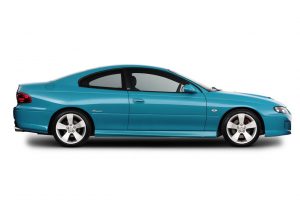Recalls: Holden VZ Monaro
Overview
Manufacturers, or importers, issue recalls for defects or faults which have the potential to cause injury. Generally, manufacturers will inform the original buyers if their vehicle is subject to a recall and of the steps required to remedy the defect or fault. Please note that the recalls below (if any) are for Australian-delivered vehicles only. Furthermore, the number of recalls should not be taken as an indication of a model’s reliability or its safety more generally.
Recalls: Holden VZ Monaro
- In March 2006, a recall was issued for Holden VZ Monaro models manufactured from 1 April 2003 to 2 December 2005 that were fitted with front seat-mounted side airbags. The electrical earth wire fitted underneath either front seat could become detached, potentially causing an electrostatic charge to transfer through the seat and causing unintended deployment of the front side airbag when the vehicle was stationary and while an occupant was exiting one of the front seats (PRA 2006/8380).
- In March 2006, a recall was issued for Holden VZ Monaro models built from 1 May 2004 to 30 July 2004 due to the incorrect fitment of a plastic clip to the plenum panel. If fitted, the circular clip could contact the engine fuel feed hose, potentially causing a fuel leak and fire hazard (PRA 2006/8407).
Problems and faults: Holden VZ Monaro
Overview
This section identifies potential problems, causes and fixes based on the experiences of owners and repairers, online sources and technical service bulletins. This information is provided solely for reference purposes and AustralianCar.Reviews recommends that only properly qualified persons carry out repairs or modifications. Furthermore, the number of items below should not be taken as an indicator of a model’s reliability or the frequency with which they may occur.
To report a problem or fault to the AustralianCar.Reviews team, please use the Contact Us form. Note that AustralianCar.Reviews does not offer advice on automotive problems or disputes; such enquiries will not receive a reply. For vehicles purchased from dealers after 1 January 2011, please see our Australian Consumer Law fact sheet.
VZ Monaro: LS1 V8 engine
Overview
With the exception of the early 5.7-litre LS1 V8 engines, General Motors’ LS V8 engines are regarded as being generally reliable. However, they may experience the problems described below.
Hydraulic lifter failure
For GM’s LS V8 engines, the hydraulic lifters may fail due to:
- A failed plunger within the lifter itself. When the plunger fails, it cannot maintain oil pressure and remains in a collapsed state – the lifter therefore cannot take up valve lash such that a tapping noise is heard that increases in volume and frequency with engine speed;
- The spring mechanism jamming – this is more common in older engines;
- Inadequate lubrication of the lifter roller wheel surface causing friction on the lobe (this generally results in a squeaking noise);
- Softened valve springs which also require replacement; or,
- Worn lifter buckets.
A failed hydraulic lifter can bend the pushrods which can then fall out of the space between the rocker arm and the top of the lifter. Once a pushrod falls out of that space, it may cause broken rocker arms, broken valves, cracked heads, a damaged cam or total engine failure.
It is recommended that the lifters be replaced every 100,000 kilometres, though failure of the hydraulic lifters is more common in engines with high-lift camshafts because higher spring pressure are required to prevent valve float, putting extra pressure on the lifter. Replacing the lifters requires that the cylinder heads be removed such that new head gaskets and head bolts are required.
Hydraulic lifter noise
From cold start-up, the hydraulic lifters may make a tapping noise. The most common cause of hydraulic lifter noise is particles in the engine oil becoming jammed between the lifter plunger and the lifter body, causing the plunger to become stuck down. The clearances between the plunger and body of a hydraulic lifter can be as little as 3 microns (0.003 mm) such that any particle larger than this in the oil can jam the lifter plunger in its body.
Lifter noise may also be caused by aeration of engine oil in the lifter’s pressure chamber since this increases valve closing velocity. Aeration of engine oil may be caused by:
- air in the higher pressure chamber of the lifter affecting valvetrain lash;
- air that is ingested into the lifter during a cold start due to a suction side leak at the oil pump or oil pump pick-up tube O-ring; or,
- low oil levels and high engine speeds.
Once air gets into the high pressure chamber, it will be slowly expelled through the narrow clearance of the plunger and body.
Rocker bearing failure
The rocker bearings – which sit on top of the valve train and transfer energy from the pushrod to the valve – can develop a sideways slop which can damage the valve tops, the rocker or valve springs. Furthermore, the rocker bearings can split such that the needle bearings fall out and end up in the oil pan.
Trunion bearing upgrade kits can be installed in the factory rockers which reduce sideways movement and provide a better range of vertical movement. Alternatively, after-market roller rockers can be installed which have better geometry than the standard rockers and control the valve more precisely via the centre of the valve tip.
Valve spring failure
The LS engine has ‘beehive’, single valve-type valve springs (as opposed to a dual valve spring which has a smaller spring inside the primary spring) and, in rare cases, the valve spring may break at its top where the coils are tightly wound. If a single valve-type valve spring breaks, it is common for the valve to be dropped, causing significant engine damage; sometimes, however, the valve may be held up by the valve locks when the spring is breaks. Symptoms of broken valve spring include:
- Engine vibrations;
- Loss of power beyond 4000 rpm;
- Misfire under load; and,
- Constant misfire.
If the vehicle is driven with a broken valve spring, a valve may come into contact with the piston, causing the valve to be bent. Furthermore, if the valve head breaks off, the engine will seize. To fix a failed valve spring, the cylinder heads need to be removed so that a new valve, head gasket and head bolts can be fitted.
For durability, it is recommended that high rpm are avoided when the engine is cold.
LS1 V8 engine: other problems
- Within the LS1 engine bay, the plastic engine shroud could rub and cause wear on the fuel hoses.
- Excessive engine vibration may be due to the powertrain control module (PCM) calibration (later revised with improved idle speed control), a stressed exhaust system or a bent catalytic converter bracket (spacers can be added to keep the bracket straight when bolted in place).
- Squealing noises from 1500-1900rpm may be due to the power steering pump pulley being misaligned with the crank and alternator pulleys.
Transmissions
- The spigot bearing for the Tremec T56 transmission was susceptible to failure, producing a whirring noise when the engine is running and difficulty selecting gear.
- The clutch pedal to clutch master cylinder pushrod pivot pin and bush may become dry and squeak – applying Molybond GA10 grease to the pin and bush will reduce this.
Suspension
The suspension bushes wear over time and eventually require replacement. A common modification is to fit polyurethane bush kits that enhance steering feel, reduce tyre wear and last longer than the standard suspension bushes.
Water and rust
If the drain holes become blocked, water can collect inside the front chassis rails and cause corrosion.
Problems and faults: Holden VZ Monaro
- The starter motor may work intermittently due to components in the Powertrain Interface Module (PIM) being susceptible to static. A revised PIM was subsequently released.
- A rattling noise from the steering column when driving at highway speeds or on coarse roads may be due to the steering column adjuster spring vibrating against the steering column housing – a cable tying the two sides of the spring together may alleviate the problem.
- The fuel gauge may be inaccurate due to a bent fuel-level float arm or faulty fuel level sender unit.
- The audio controls in the steering wheel may work intermittently due to loose connections between the wheel and radio head.
- Poor radio reception may be due to invisible cracks in the rear window defogger grid lines.



